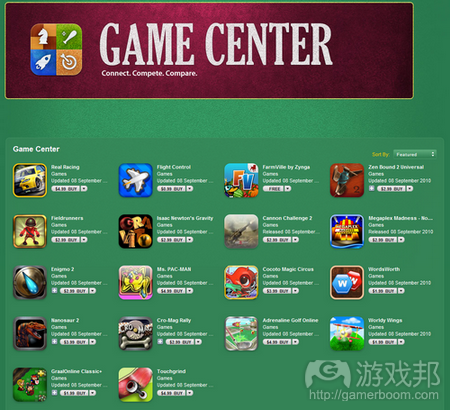图标和推荐位置是游戏实现曝光率的关键
作者:Will Luton
如今众多公司纷纷入驻移动游戏领域,致使该市场变得异常拥挤。
要在此颇具竞争性的开放低价市场发行作品,若没有杰出洞察力和营销技能,作品将同资金一起石沉大海。
若你来自传统游戏领域,就需摒弃许多既有传统观念。若你首次独立开发游戏,需知晓优秀营销策略的重要性。
推广移动游戏需铭记两点:单凭投入大量制作和推广成本远不够,其运作模式不同于掌机或PC领域。因此,成功作品需通俗易懂,能立即吸引玩家眼球,即便不是采用免费模式,也是非常平价。
开发商有许多销售渠道可供选择,但只有两个平台规模巨大,能够无障碍掳获新玩家:谷歌Android和苹果iOS。
移动图标
苹果App Store是iOS应用的唯一分销渠道,但Android具有众多平台(游戏邦注:其中包括谷歌自己的Android Market、GetJar、亚马逊及系列预先安装于移动设备的运营商应用商店)。
但所有渠道都存在一个共性,应用都以名称和图标排列呈现。浏览页面的玩家(他们是主要应用商店顾客)有众多高质量选择,所以作品像数上千,同时融入众多特征描述,是打造成功营销案例的关键。
但让玩家发现应用是个艰难而无法凭直觉进行的过程,有时需投入几周或几个月。缩小范围的一个有效方式是在AdMob之类的网站进行A/B测试。你可以创建系列不同名字,不同图标的方案,购买一定印象指数,然后观察获得最佳点击率的方案。你可以不断调整,直至找到最佳方案。这只需少量预备资金(每个方案只消投入50美元,就能获得显著成果),便能让未来曝光度更富成效。
曝光度至关重要。传统游戏PR或许会借助杂志传播渠道,E3展位,或者是电视广告。但在移动领域,门户网站之外的曝光都是徒劳。
和主流专业零售商不同,商店玩家来自不同背景,不会总阅读专业报纸,除非直接接触应用版面,否则他们通常无心购买某具体产品。如今移动玩家的主要目的是寻找乐趣。
这促使推荐位置成为应用生命初期最重要的影响因素。所有App Store力作都大同小异:通过初期强力推荐和融入杀手级属性(游戏邦注:包括图标、名称和用户评级)在榜单获得有利位置,增加更多曝光度,这能够带来不可思议的积极反馈循环,赢得每日数十万的下载量。
有利推荐位置
此有利位置仅出现在少数游戏中,虽然多数游戏以失败告终,还是有某些应用凭借适度推荐获得营收。
但获得推荐位置是所有开发商的终极目标。这或纯粹靠运气,或通过沟通,找到联系人,说服他们提供位置。
若推荐位置无法生效,应用便会很快就淡出大众视线。曝光度和安装量可通过直接促销购得,如游戏旗帜印象,免费促销网站(日免费游戏或免费游戏日)和PPI(奖励安装)。
PPI是个有存有争议的模式,其给予安装用户虚拟货币奖励,通常运用至免费游戏。这是众所周知的在免费内容中脱颖而出的不光彩秘密,能够带来庞大安装数量,有效获得有利地位。苹果最近突然取缔该模式,但其仍旧在Android市场蓬勃发展。
市场正快速发展,所有渠道和平台都有其自身特点,所有游戏类型都有其用户族群和商业模式。此外,诸如玩家赞助和PPA(操作付费)之类的营销方式正迅速涌现。所以我们需不断关注动态,分享消息,进行沟通,留心行业新闻和榜单变化。(本文为游戏邦/gamerboom.com编译,如需转载请联系:游戏邦)
MOBILE GUIDE: Self-made marketing
by Will Luton
Mobile Pie’s Will Luton offers expert advice on getting noticed in an ocean of competition
[MOBILE GAMES GUIDE INDEX]
Here at Mobile Pie we devote ourselves to building and selling glorious looking games that create a lot of joy.
Yet we aren’t the only ones – many visionaries, geniuses, chancers and fools pump out content in to the mobile games markets, leaving them flooded.
Launching a game in this competitive, open and price-squeezed space, without good understanding and marketing, will cause your game to sink along with your cash.
If you’re coming from a traditional ‘shelves and stock’ gaming background, you’ll need to forget a lot of the conventional wisdom you’ve learned. If you’re a first time indie, as much as it is painful to say, you’re going have to accept the importance of good marketing to make sure you survive.
There are two really important things to remember when selling a mobile game; production and distribution costs don’t apply, and they aren’t played in the same way as console or PC titles. Therefore, successful games are quickly accessible and instantly sticky and, when not free, very cheap.
There are many potential outlets for a developer, but only two are sizeable and frictionless enough to be of interest to a newcomer: Google’s Android and Apple’s iOS.
MOBILE ICONS
Apple App Store is the only outlet for iOS apps, but Android has numerous, including Google’s own Marketplace, as well as GetJar, Amazon and a smorgasbord of gated operator stores that come preinstalled on mobile devices.
All these outlets, however, have one thing in common; the apps are listed as a name and an icon. The browsing gamer, the majority of any app store’s customer base, are bombarded with lots of these high-level propositions, so getting a good combination of a few thousand pixels and forty characters to tell a convincing story is crucial.
It can be a pretty tough and counter-intuitive journey finding this story and many sink weeks and months in to it. A great way to narrow down is to A/B test on a network like AdMob. You can set up a series of campaigns with different name and icon combos, buy a set amount of impressions and monitor which get the best click-through. You can then tune and fiddle until you’ve hit gold. This requires very little cash up front – you can get good results from as little as $50 per campaign – but makes any future visibility instantly more effective.
And it is visibility that is so much the key. Traditional games PR would at this point book some magazine spreads, E3 booth babes and maybe a TV spot. In mobile, however, most awareness raising off portal is entirely futile.
Unlike at a high street specialist retailer, gamers come to stores from all kinds of different backgrounds, without always having exposure to specialist press and, unless directly linked to an app page, without the intention of acquiring a specific product. The average mobile gamer is looking for something fun, now.
This makes featured placements the most important thing in the early life of an app. All huge App Store hits have the same anatomy; Strong initial featured spots and killer high-level propositions – icon, name and user rating – leading to chart traction, which brings further visibility and, if the app is good, word of mouth buzz. This sets up a magical positive feedback loop sustaining hundreds of thousands of downloads a day.
STRIKING GOLD
This golden scenario happens to only a handful of games, and whilst the majority of apps fail, lots live on to be profitable with only moderate featured exposure.
Yet getting featured placement should be the number one goal of any developer. This is achieved either out of pure luck – being picked out of the crowd – or by networking, finding contacts and lobbying them for position.
When featured placement fails, an app easily slips in to obscurity. Visibility and installs can be bought with direct-link promotions such as in-game banner impressions, free promotions sites – Free Game of the Day and Free App a Day are excellent – and, where available, PPI.
PPI (Pay Per Install) is a controversial system of rewarding a player with virtual currency for installing another, often free, game. It was known by many as the dirty secret of top ranking freemium iOS titles, driving huge numbers of installs and effectively buying chart position. Apple recently closed the practice down overnight, but it is burgeoning on Android.
This article is not an exhaustive list. The markets move quickly and each outlet and platform has its individual quirks, each game type its own demographics and business models. Meanwhile marketing methods, such as player sponsorship and PPA (Pay Per Action) are fast emerging. So it’s essential to keep stay on top of progress, get out, network and keep an eye on industry press and chart movement.(Source:develop-online)








































 闽公网安备35020302001549号
闽公网安备35020302001549号